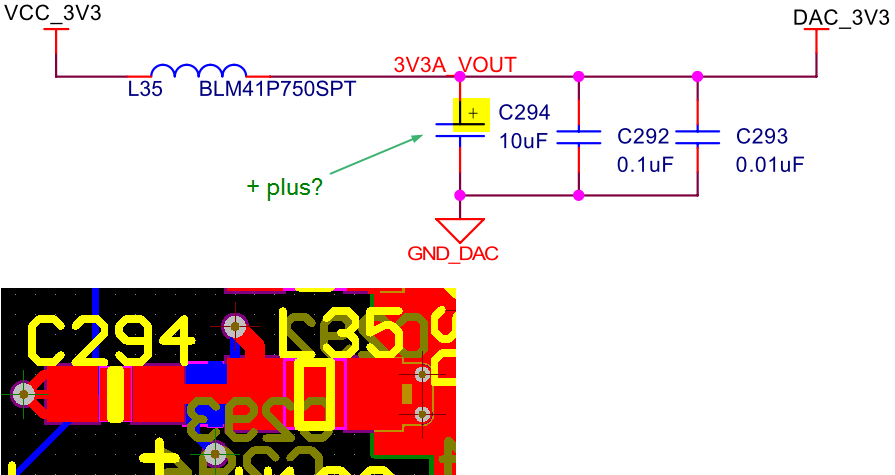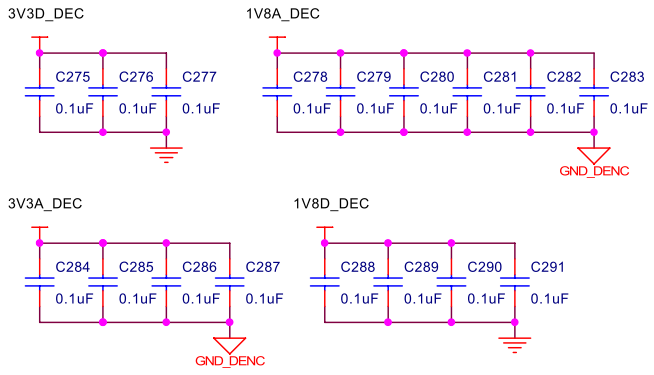Hi All,
I would like to ask a question on capacitor connection for TVP5146.

In the page for TVP5146M2 connection, found in EVM6437 schematics, capacitor C294 is with a plus symbol.
What does the plus symbol mean?
I also noticed that its footprint in PCB is quite different from other types of capacitors. So what type of capacitor it is, and why is it used here along with TVP5146?
Thanks,
Zheng

